
Why is it That This Japanese Crab Tastes Better Than Any Other Crab?
- Written by: Minna no Kotoba Sha
Japanese Crab, or kani, is one of Hokkaido's staple specialties and a very popular dish sought by tourists and locals alike. You can enjoy it boiled in salt, or cooked and fried.
Among the variety of ways to prepare a crab dish, our focus today is on the special dish called “Kani Shabu-Shabu.” Let us explore exactly what kind of cuisine this Japanese crab dish really is, how to prepare it, and best of all, how to eat it!
- Table of Contents
What is Kani Shabu-Shabu? What are the differences between king crab in Japan and snow crab?
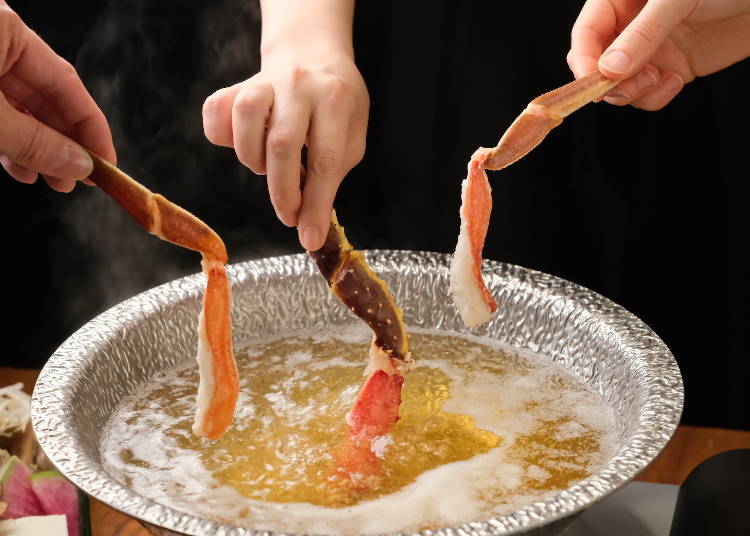
Kani shabu-shabu is a hot pot dish of raw crab legs cooked in a seasoned and spiced hot “dashi” broth. Just like your regular shabu-shabu using meat, it is a very simple dish to prepare and eat. However, that simplicity is exactly what allows us to fully enjoy the authentic taste of delicious Japanese crab.
The types of crab used for shabu-shabu dishes are generally king crab ("taraba" in Japanese) and snow crab ("zuwai" in Japanese).
King crab has a very large body, with thick, plump legs. Eating even a small amount will give you the satisfaction of having eaten a whole crab!
Snow crab has a smaller body and slender legs, but the flavor has a sweetness to it that differs from other types of crab. Snow crab is recommended for those who care more for the taste of their meal rather than the amount.
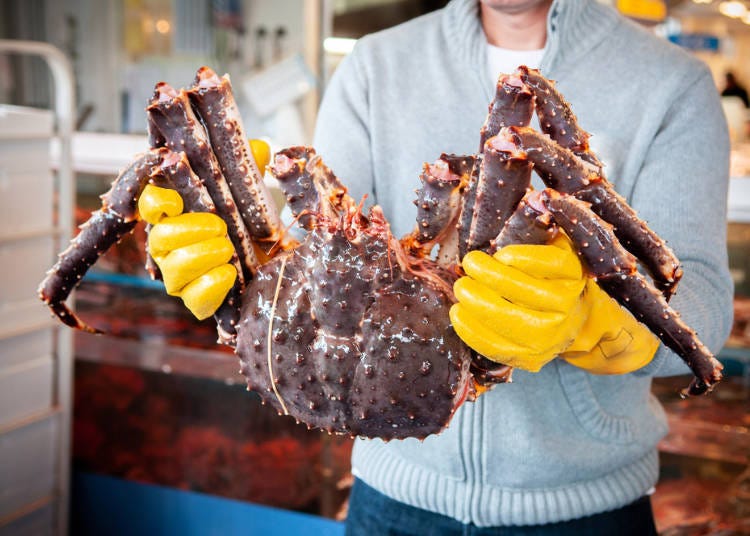
Why Japanese crab from Hokkaido is so delicious!
While you can fish for crabs all throughout Japan, many people specifically flock to Hokkaido to try the local crab dishes during their sightseeing trip. So what is it about Hokkaido crabs that make them so irresistibly delicious?
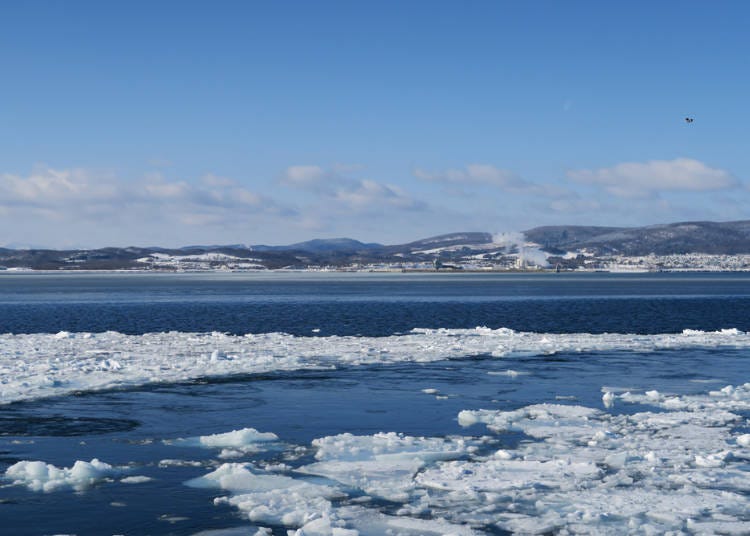
It is said that one of the factors that determines the taste of the Japanese crab is the temperature of the seawater in which they live. The northern waters of Hokkaido, the northernmost part of Japan, are characterized by their year-round low temperatures, unlike the waters south of Honshu.
The seas surrounding Hokkaido usually drop below 5 degrees Celsius midwinter, with drift ice making an appearance along the coast facing the Sea of Okhotsk. In order to live and survive in such frigid conditions, the crabs inhabiting these oceans develop a much stronger body for protection, incidentally also making them much more savory and flavorful.
Kani-Tsume: Enjoying delicious crab shabu-shabu! (Permanently closed)
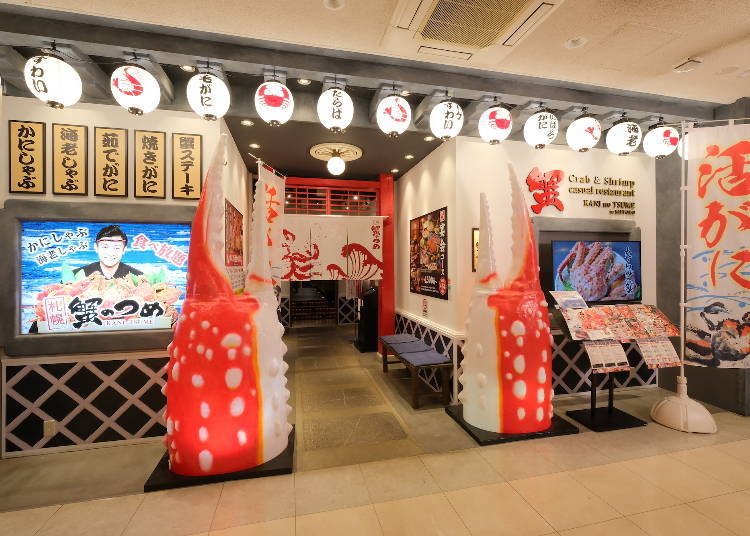
There are many specialty crab shops in the center of Sapporo. The most popular area is downtown Susukino. Kani-Tsume, opened in June of 2018, is a shop on the second floor of Tokyu Restaurant Plaza Sapporo in Susukino.
Large crab claws stand like gates at the entrance, welcoming customers. There are four seating arrangements in the shop to accommodate parties from as small as 2 people to groups of 10 or more.
(*Note: This shop is permanently closed as of Jan 2021)

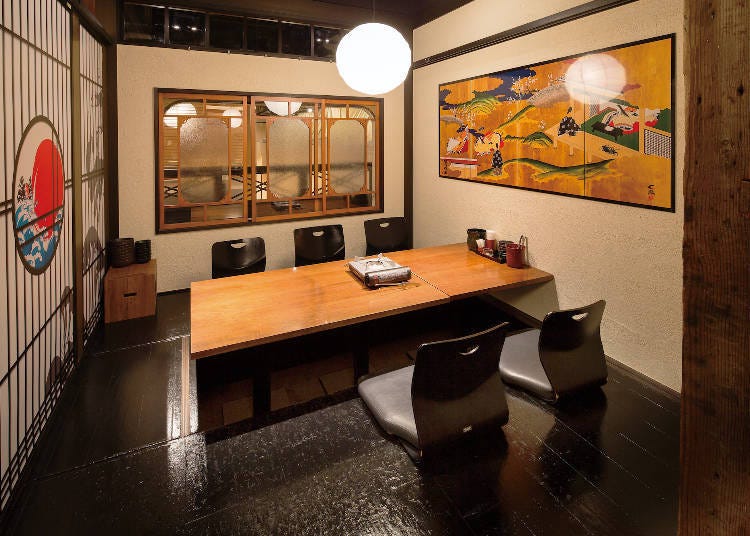
At Kani-Tsume, you can enjoy an all-you-can-eat crab course! Of course, there are a number of a la carte dishes as well, including fried foods, sushi, and even rice bowls, each of which incorporate crab in some way, shape, or form. Today we will try the delicious crab shabu-shabu at Kani-Tsume.
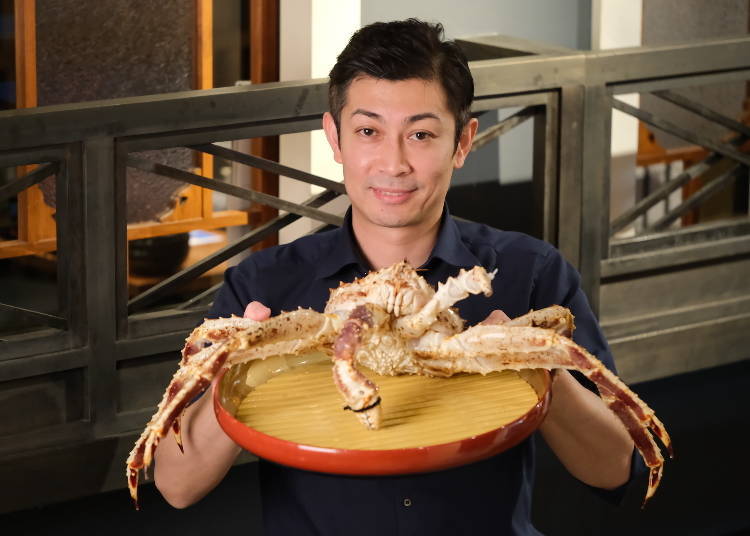
We ordered the "Kani-Ebi Shabu" (a set of fresh, shelled crab and red shrimp, 3,200 yen per person plus tax). First, we heat up the broth, which is simply flavored with only Hidaka kelp.
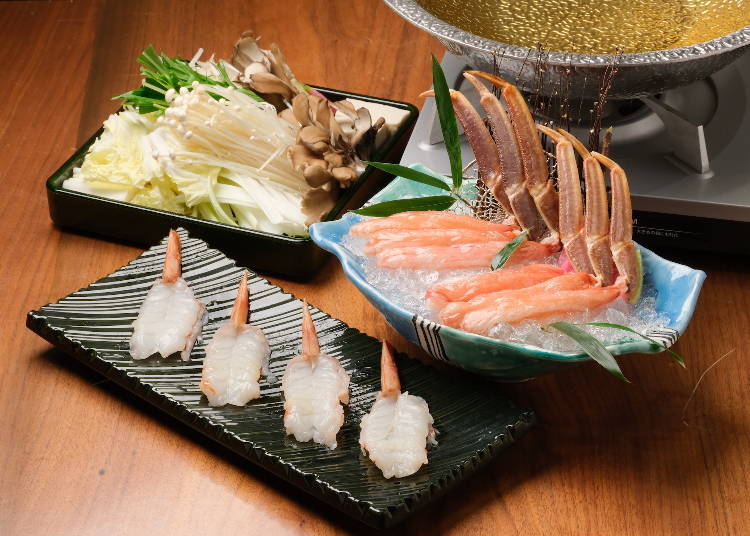
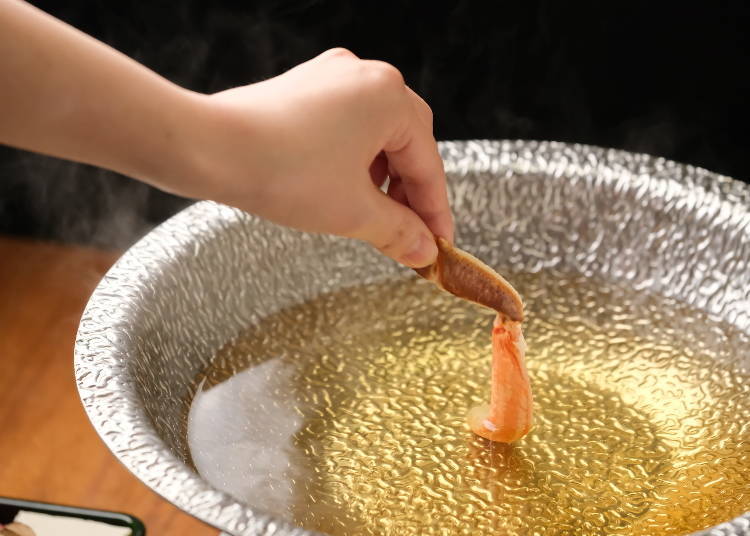
When the steam begins to rise, it's time to put the crab into the pot! Hold the crab leg by the shelled part and dip it into the broth, slowly swishing it around, being careful not to drop it into the pot. If the broth is too hot to hold the crab with your hands, you can use chopsticks.
What you need to pay attention to is how long the crab is submerged in the pot. This will influence how delicious your crab shabu-shabu will be.
According to Mr. Arai, snow crab should be cooked for about 20 to 30 seconds, and king crab about 40 to 60 seconds. Once the entire portion of crabmeat is plump, you know it is ready to eat.
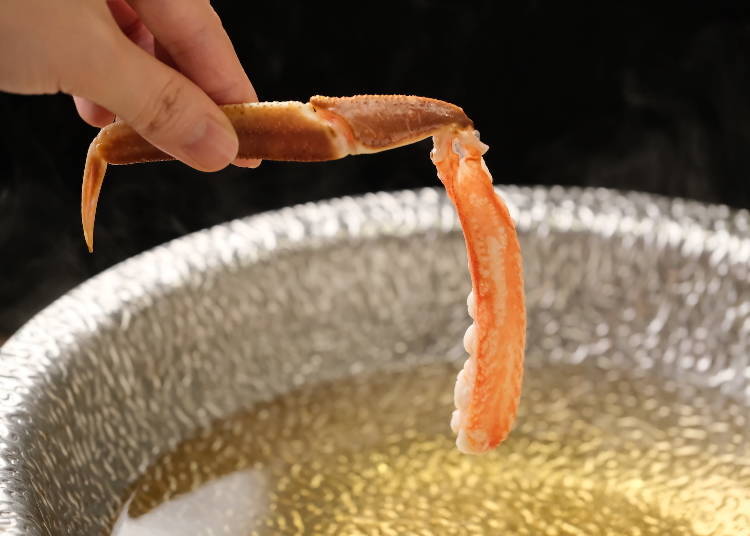
Remove the Japanese crab from the pot, and dip it in the refreshingly delicious citrus sesame sauce. The crab is sweet with a fluffy texture, just like real snow! Feel free to add extra spices of your choosing to the sesame sauce.


Additional menu items you can order with the Kani-Ebi Shabu dish are snow crab, king crab, shrimp, and vegetables. Since the first set does not include king crab, why not order it on the side and compare?
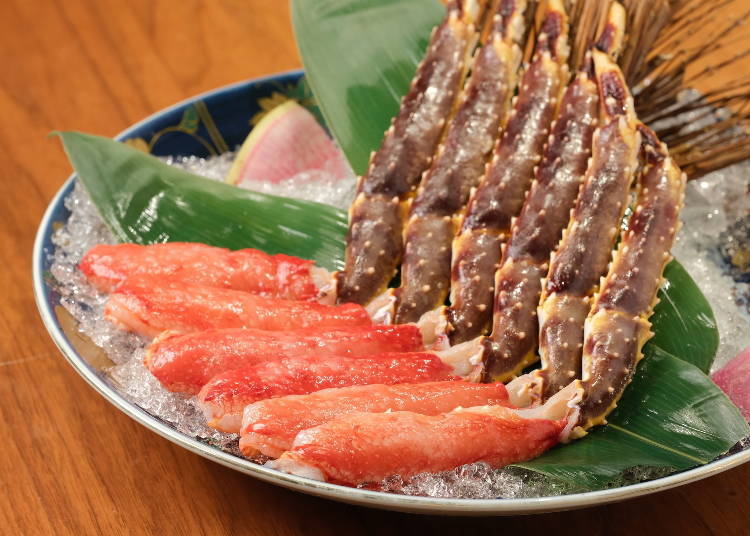

There are also additional menu items you can add to the pot when the broth is reaching its end. It is common in Japan to add ingredients such as noodles and rice to the remaining broth, and finishing up every last drop.
At Kani-Tsume, you can chose from three types of noodles: udon, soba, and ramen. Enjoying noodles together with crab, shrimp, and vegetables make for a very special and delicious dish.
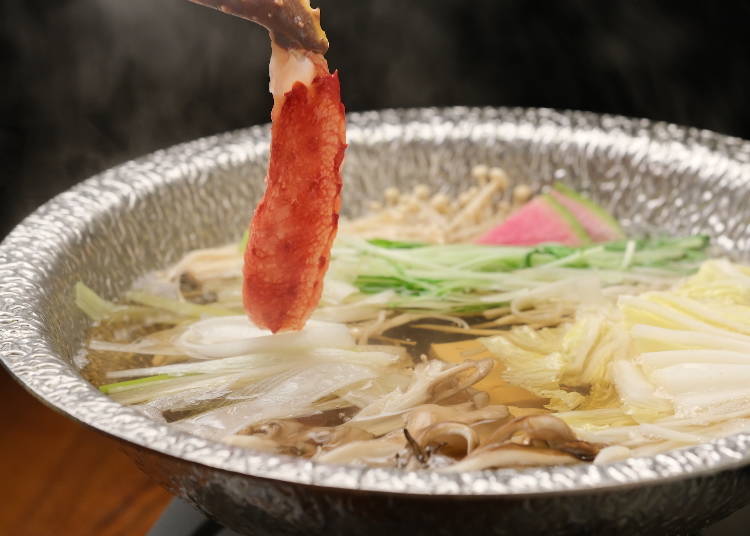

You can place your order using the touch panel at your seat. It is available in Japanese, English, Chinese (traditional and simplified) and Korean, so you can order with confidence regardless of your Japanese language level.
Kani-Tsume's amazing Japanese crab menu!
In addition to their all-you-can-eat meal sets, Kani-Tsume also offers an a la carte menu. The most popular dishes amongst foreign tourists are crab shumai, crab tempura, sushi, and rice bowls.
While there are plenty of specialty shops that offer traditional and course meals featuring crab, at Kani-Tsume, you are free to enjoy as much crab as you like.
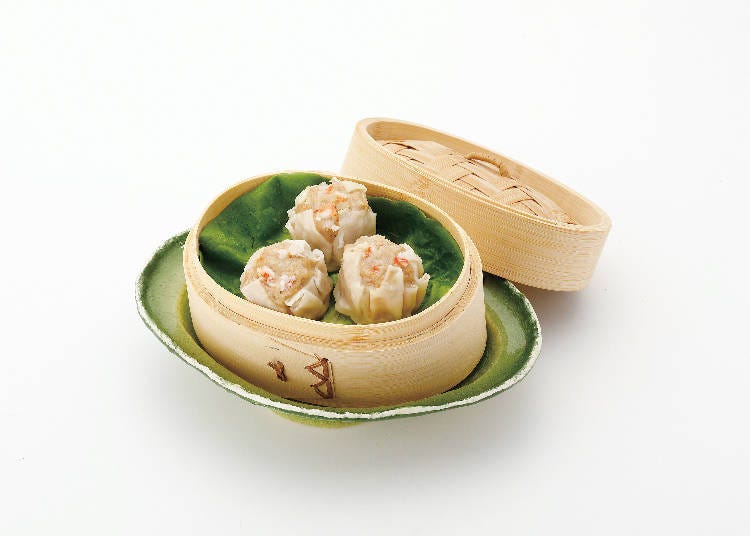

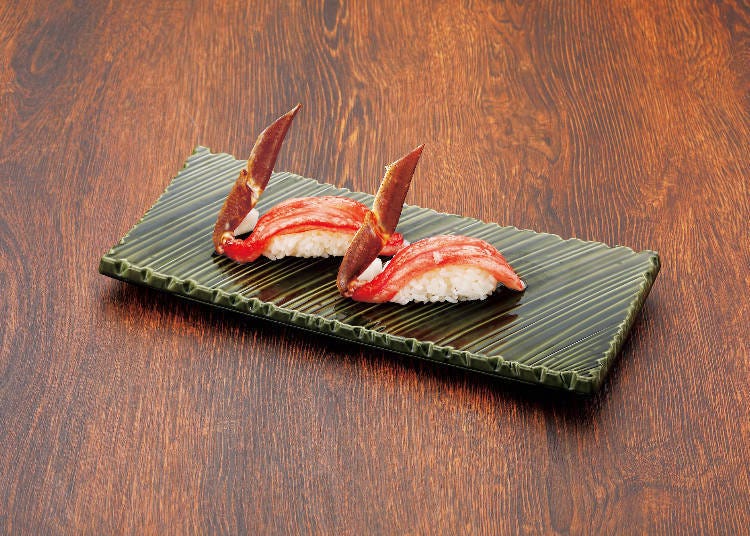
Don't miss out on Japanese crab season!
Which crab is in season varies by type. Seasons and fishing grounds vary as well, so you can enjoy different types of crab all year round. If you want to eat a particular favorite crab while it's in-season, we recommend checking in advance for availability.
In general, winter is said to be the best season for snow crab, while king crab in Japan is best enjoyed from winter to spring. So next time you take a trip to Hokkaido, why not try some delicious Hokkaido crab dishes? Chances are you won't taste anything like them anywhere else!
Text by:minna no kotoba sha
Minna no Kotoba Sha is a production company founded by an editor with extensive experience in editing local magazines in Sapporo. For over 20 years, our team has conducted research and written articles across Hokkaido, with Sapporo as our primary hub. Our diverse portfolio includes the production of various books such as travel guides, informational magazines, and collections showcasing the picturesque landscapes of Hokkaido. Comprised entirely of women, the team at Minna no Kotoba Sha boasts diverse interests, including a passion for travel, culinary delights, and alcoholic beverages. The scope of our communication efforts spans a wide range, covering everything from introducing notable restaurants to providing coverage of local events and sharing stories of leisure experiences.
- Area
- Category
*Prices and options mentioned are subject to change.
*Unless stated otherwise, all prices include tax.
Popular Tours & Activitiess
Recommended places for you
-

Niseko Village Ski Resort
Skiing & Snowboarding
Niseko / Rusutsu
-
Appealing

Shirogane Blue Pond (Aoiike)
Rivers, Lakes & Canyons
Furano / Biei / Sounkyo
-
Appealing

Rukku and Uohei
Izakaya
Sapporo / Chitose
-
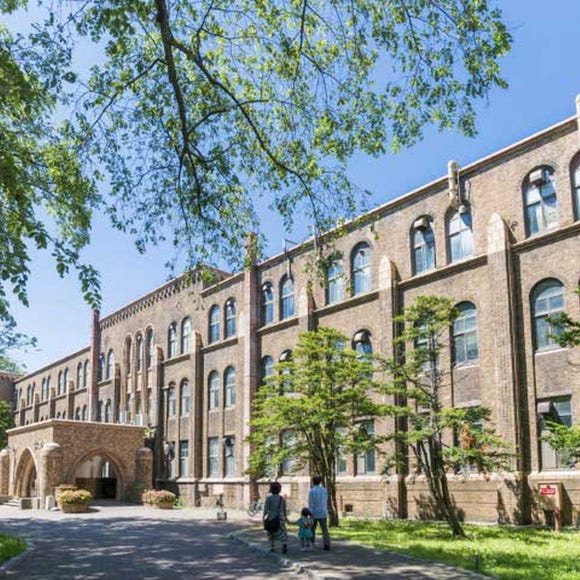
Hokkaido University
Other Architecture
Sapporo / Chitose
-
Appealing

Mt. Hakodate Observatory
Forests & Mountains
Hakodate
-

Butadon Kobutaya
Shabu Shabu
Sapporo / Chitose
-
Ad

Smart Ways to Avoid Crowds and Enjoy a Safe, Comfortable Trip to Otaru.
-

Beyond Hakodate and Matsumae: Enjoy the Hidden Gems of Hokkaido’s Donan Area
-

Great Local Eats: 5 Expert-Recommended Local Chain Restaurants in Hakodate
by: Nobuka Kawashima
-
Ad

Sapporo SATUDORA Shopping Guide: Get Souvenirs, Medicine & More at This Iconic Drugstore (Special Deal Inside!)
-

Scenic Road Trip from Hakodate to Matsumae: Stunning Views, Traditions, and Tasty Delights
by: Nobuka Kawashima
-
Ad

Cycling Through Hokkaido: Discover the Beauty of Memuro and the Tokachi Plains
-

Kichijoji – Explore Tokyo’s Top-Rated Stylish Suburb in Half a Day!
-

Healthcare in Japan for Tourists: What to Do When You Get Sick or Injured in Japan
-

6 Most Scenic Spots Around Mount Yotei, Hokkaido: Gorgeous Sunflowers & More!
-

The Best of Japan: 11 Major Cities Every Traveler Should Visit
-

Hakodate 2-Day Itinerary for Exploring Japan's Foodie North!
-

These 18 Things to Do in Hakodate Will Make You Fall in Love With the Northern Wonderland
by: Guest Contributor
- #best sushi hokkaido
- #things to do hokkaido
- #best ramen sapporo
- #what to bring to japan
- #new years in tokyo
- #what to buy in ameyoko
- #japanese nail trends
- #what to do in odaiba
- #onsen tattoo friendly tokyo
- #daiso
- #best sweets otaru
- #japanese fashion culture
- #best nature furano
- #japanese convenience store snacks
- #best japanese soft drinks
















